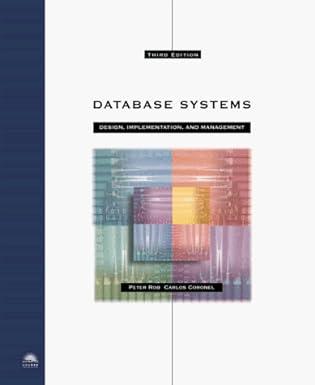Question
Given a directed weighted graph G = (V, E) with every edge e has weight w(e) > 1. Assume G contains a node s that
Given a directed weighted graph G = (V, E) with every edge e has weight w(e) > 1. Assume G
contains a node s that can reach all other nodes.
Suppose we square the weights of the edges in G. In other words, we have the same graph G
except every edge e has a squared weight w1(e) = w(e)2. The shortest path tree now might
change compared to what you have before. If we change the tree by squaring the weights
again, until two successive shortest path trees are identical. Argue that further squaring will
not change the shortest path tree. Thus, these shortest paths now can be defined with no
reference to the actual weights. i.e., given two paths instead of evaluating whether path p1
is shorter than path p2 can be determined just by comparing weights, without having the
operation of addition of weights. Describe this characterization of the way of comparing the
length of paths.
Example: Suppose when we started there are just two paths, each of two edges, from s to
some v, One path has two edges of weights 5 and 5 and the other 7 and 2. At the beginning,
the 7,1 path is the shortest because its length is 9 and the other is 10, but after one squaring
we will get 25, 25, and 49, 4, respectively. Now the shortest path is the previous 5,5! Why
this happened? The most weighty edge between the two paths is 7, and squaring enough
will get it to dominate. If the two paths were tied with respect to the most weighty, then the
second most weighty will break the tie, etc.
Step by Step Solution
There are 3 Steps involved in it
Step: 1

Get Instant Access to Expert-Tailored Solutions
See step-by-step solutions with expert insights and AI powered tools for academic success
Step: 2

Step: 3

Ace Your Homework with AI
Get the answers you need in no time with our AI-driven, step-by-step assistance
Get Started


